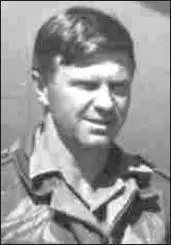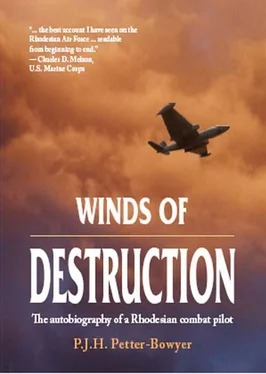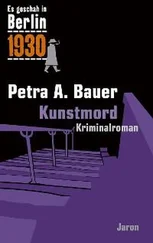Peter Petter-Bowyer - Winds of Destruction
Здесь есть возможность читать онлайн «Peter Petter-Bowyer - Winds of Destruction» весь текст электронной книги совершенно бесплатно (целиком полную версию без сокращений). В некоторых случаях можно слушать аудио, скачать через торрент в формате fb2 и присутствует краткое содержание. Город: Solihull, Pinetown, Год выпуска: 2012, ISBN: 2012, Издательство: Helion & Company, 30° South Publishers, Жанр: Биографии и Мемуары, на английском языке. Описание произведения, (предисловие) а так же отзывы посетителей доступны на портале библиотеки ЛибКат.
- Название:Winds of Destruction
- Автор:
- Издательство:Helion & Company, 30° South Publishers
- Жанр:
- Год:2012
- Город:Solihull, Pinetown
- ISBN:9781908916754
- Рейтинг книги:5 / 5. Голосов: 1
-
Избранное:Добавить в избранное
- Отзывы:
-
Ваша оценка:
- 100
- 1
- 2
- 3
- 4
- 5
Winds of Destruction: краткое содержание, описание и аннотация
Предлагаем к чтению аннотацию, описание, краткое содержание или предисловие (зависит от того, что написал сам автор книги «Winds of Destruction»). Если вы не нашли необходимую информацию о книге — напишите в комментариях, мы постараемся отыскать её.
Winds of Destruction — читать онлайн бесплатно полную книгу (весь текст) целиком
Ниже представлен текст книги, разбитый по страницам. Система сохранения места последней прочитанной страницы, позволяет с удобством читать онлайн бесплатно книгу «Winds of Destruction», без необходимости каждый раз заново искать на чём Вы остановились. Поставьте закладку, и сможете в любой момент перейти на страницу, на которой закончили чтение.
Интервал:
Закладка:
Bob and all the pilots saw trenches but no sign of people or anti-aircraft fire. The SAS patrols agreed that not a shot had been fired at any aircraft. So, all in all, it looked as if ZIPRA had vacated the position. Nevertheless, Bob MacKenzie instructed his teams to continue as briefed. This was to move closer to the base then listen and observe from ambush positions—a classic SAS task.
The southern SAS patrol had only just established its ambush after sunset when a ZIPRA patrol came their way moving through thick bush in extended formation. One ZIPRA man was killed before the main group scampered into deep cover. Blood spoor showed that others had been wounded and dragged to safety.
Because of this action, Bob ordered both patrols to break ambush and commence a move towards the main ridge. They were to link up on the high ground at first light before descending into the suspect base area. Faced with thick jesse bush conditions on a dark night, the southern patrol opted to move along the vehicle track. In doing so it ran into a ZIPRA ambush in which one of the SAS men, Lance-Corporal McLaurin, was fatally wounded. In consequence, and because another soldier was down with severe heat fatigue, the patrol moved to safety and held position until a helicopter casevac was made at first light.
Because both patrols were still well short of the ridge, helicopters moved the troops closer to their objective. At the time, the commanders of both groups were sure that ZIPRA must have pulled out of the area following afternoon and night encounters. They were seriously mistaken!
Unbeknown to the Rhodesians, a large conventionally trained and highly disciplined ZIPRA force, dug in on the ridges and pan area, awaited them. All command posts were linked by landline telephones that allowed the progress of the two SAS patrols to be relayed by those who could see them to others who could not. Not a sound could be heard by the SAS as they climbed the steep-sided ends of the ridge.
As they were nearing the top, the southern group came under unexpected intense and accurate fire from a host of weapon types. The group was pinned down and could not move in any direction without attracting angry attention. Jet support was called for.
Trevor Jew and Bob MacKenzie immediately got airborne from Kariba in a Lynx. They aimed to establish the position of the pinned-down group as well as the ZIPRA elements containing them. They arrived ahead of the jets and picked up the flash and dust of a ZIPRA recoilless-rifle firing at the trapped soldiers. In an attempt to relieve the hard-pressed soldiers, Trevor turned in with the intention of neutralising the enemy position with Frantans. Showing great discipline, the enemy had patiently withheld their fire against aircraft the previous day; but now they opened up with a vengeance the moment Trevor commenced his attack dive.
The weight of fire was too great to continue the attack and, as the Lynx pulled up and turned, it took critical strikes which forced Trevor to turn for home. On the way his damaged front engine quit and at Kariba he was forced to make a relatively high-speed belly landing because severed hydraulic lines had disabled undercarriage and flaps functions.
In the meanwhile Hunters drew all enemy attention to themselves when they put in attacks on the pan area. This allowed the southern patrol sufficient breathing space to make a hurried withdrawal. Both patrols were then recovered to Kariba, but not before the northern group had a short contact near their helicopter pick-up point. Three ZIPRA were killed and one was captured. Miraculously, as had happened before, the captured man turned out to be a key figure. He was the logistics officer for the base.
From this important man a number of issues came to the fore. The base contained part of a battalion of ZIPRA’s 1st Brigade from Mulungushi comprising over 200 conventionally trained men with another 100 men expected to arrive soon. This particular base had been established recently as the forward element for an intended invasion of Rhodesia across the Kariba dam wall. The logistics officer said the present force would definitely not abandon its position even knowing an attack was coming. Whilst plans were being made for this, the commander of the southern SAS patrol was redeployed with a smaller callsign to keep an eye on ZIPRA developments from an OP on a prominent hill feature.

Operation Tepid

WE HAD STUMBLED UPON THIS forward base at a time when disturbing intelligence was reaching COMOPS. It concerned the movement of large numbers of ZIPRA’s conventional forces from Luso Boma in Angola and from Mulungushi in Zambia. Most appeared destined for CGT 2 base, which was obviously another forward launch-point for the impending invasion. In addition, large quantities of arms and equipment, including MiG 21 fighters, were reported to be arriving in Zambia.
Joshua Nkomo was obviously pulling out all the stops to get his large invasion force into Rhodesia before the Lancaster House talks progressed to a point where this might no longer be possible. Those forces he had in the country were small and ineffectual whilst the forces of his rival, Robert Mugabe, already dominated all of the Shona tribal areas and large sections of his own Matabeleland. Considering the imminent possibility of a ceasefire agreement to be followed by all-party elections, this was not a happy situation.
There was also the probability that, following a ceasefire, Kenneth Kaunda would prevent Nkomo from expatriating his weapons and equipment—particularly after having been caught out for hiding the war materials that the SAS destroyed in July.
After the war was over, we learned that Joshua believed his only hope was to launch all his forces immediately with a view to overrunning Salisbury in two fast-moving drives. If successful, he hoped to secure Rhodesian forces to his cause so that, together, the RSF and ZIPRA could destroy the common enemy ZANU. Thereafter, an interim government would be established to prepare the country for all-party elections that excluded ZANU.
At COMOPS we obviously knew nothing of this. All we knew was that we had to stem the flow of ZIPRA men and equipment to the border areas, and secure the three permanent bridges at Victoria Falls, Kariba and Chirundu. But first the troublesome base near Kariba had to be taken out in an operation codenamed ‘Tepid’.

The RLI and SAS were assigned to Op Tepid. Since the RLI outnumbered the SAS, command of daytime operations from a high-flying Lynx was given to OC the RLI, Lieutenant-Colonel Ian Bate. Command at night vested with OC the SAS, Lieutenant-Colonel Garth Barrett.
The basic plan was for two RLI assault groups, both moving from the north, to drive the enemy off both ridges. Once these were secured, an SAS assault force would move, also from the north, through the main base below the ridges with RLI giving supporting fire from their elevated positions.
The assault forces were choppered in at dawn on 20 October. Once they had moved forward to their start positions, SAS and RLI mortar teams were brought in to the west of the western ridge. There were tense moments when the helicopters came in to land within sight of the enemy. ZIPRA had made an excellent appraisal of likely helicopter LZs and had prepared their long-range mortars for the very positions the helicopters landed. The enemy must have enjoyed the sight of Cheetahs making a hurried departure and the mortar teams scurrying for cover.
Читать дальшеИнтервал:
Закладка:
Похожие книги на «Winds of Destruction»
Представляем Вашему вниманию похожие книги на «Winds of Destruction» списком для выбора. Мы отобрали схожую по названию и смыслу литературу в надежде предоставить читателям больше вариантов отыскать новые, интересные, ещё непрочитанные произведения.
Обсуждение, отзывы о книге «Winds of Destruction» и просто собственные мнения читателей. Оставьте ваши комментарии, напишите, что Вы думаете о произведении, его смысле или главных героях. Укажите что конкретно понравилось, а что нет, и почему Вы так считаете.












